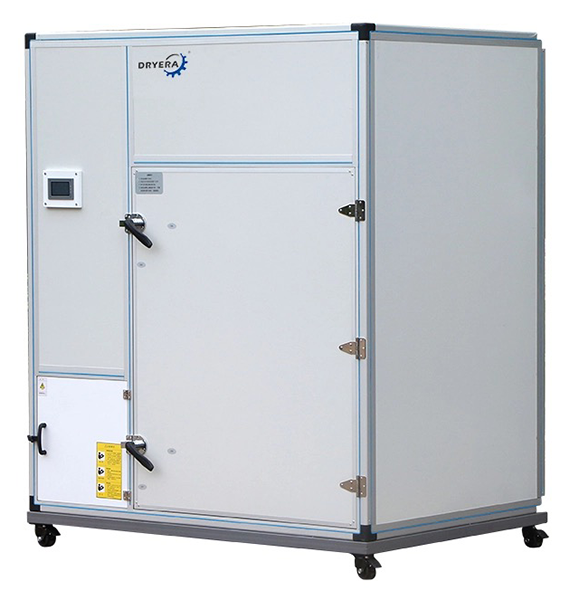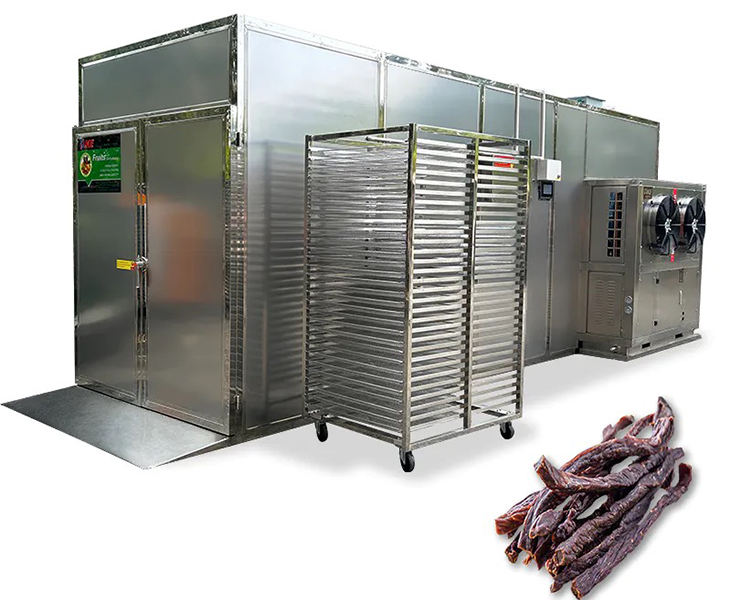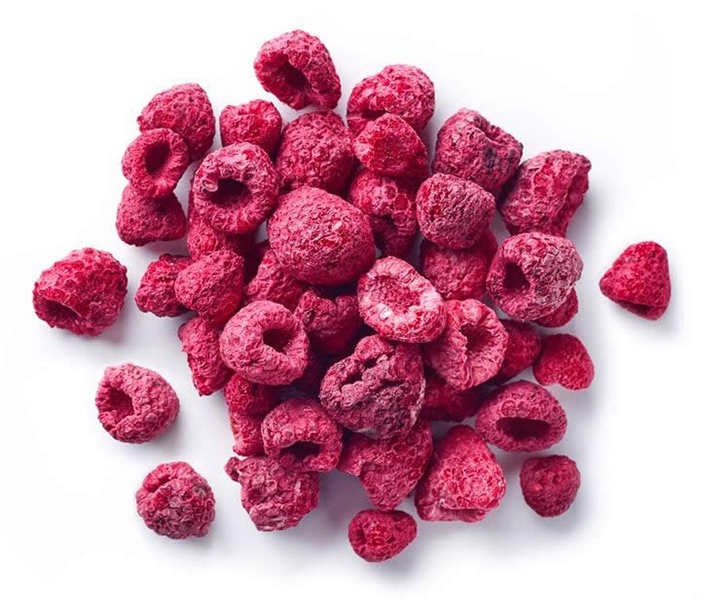
Content Menu
● Understanding Food Dehydration
>> How Dehydrators Work
● Types of Dryers: Venting vs. Heat Pump
>> Venting Dryers
>>> Advantages of Venting Dryers
>>> Disadvantages of Venting Dryers
>> Heat Pump Dryers
>>> Advantages of Heat Pump Dryers
>>> Disadvantages of Heat Pump Dryers
● Comparing Drying Performance
● Factors Influencing Choice of Dryer
>> 1. Type of Food Being Dried
>> 2. Volume of Production
>> 3. Budget Considerations
>> 4. Environmental Impact
● Benefits of Using Dehydrators
● Practical Applications of Food Dehydration
>> 1. Home Cooking
>> 2. Commercial Food Production
>> 3. Emergency Preparedness
>> 4. Culinary Innovation
● Conclusion
● FAQs
>> 1. What types of foods can be dehydrated using these machines?
>> 2. How long does it take to dehydrate food using these methods?
>> 3. Are there any specific maintenance requirements for these dryers?
>> 4. Can I use a dehydrator for commercial purposes?
>> 5. What is the best way to store dehydrated foods?
In the realm of food preservation, dehydrators play a crucial role, especially for manufacturers and brands focused on extending the shelf life of various food products. As a Chinese manufacturer specializing in food drying machines, understanding the nuances of different drying technologies is essential. This article delves into the comparison between venting dryers and heat pump dryers, focusing on their performance in food dehydration.

Understanding Food Dehydration
Food dehydration is a method of preserving food by removing moisture, which inhibits the growth of bacteria, yeasts, and molds. Dehydrators utilize heat and airflow to achieve this, ensuring that the nutritional value and flavor of the food are maintained.
How Dehydrators Work
- Heating Elements: These raise the internal temperature to evaporate moisture.
- Air Circulation: Fans circulate hot air over the food, promoting even drying.
- Moisture Removal: As moisture is released from the food, it is expelled from the dehydrator through vents.
Types of Dryers: Venting vs. Heat Pump
When comparing venting dryers and heat pump dryers, it's important to understand their operational mechanics and performance characteristics.
Venting Dryers
Venting dryers are traditional appliances that expel hot, moist air outside through a vent. They operate as follows:
- Mechanism: Air is heated and circulated through the dryer drum. The warm air absorbs moisture from the food before being vented outside.
- Drying Performance: These dryers typically have faster drying times due to higher temperatures but can be less energy-efficient.
- Installation Requirements: They require an external vent, limiting placement options.
- Energy Consumption: Generally higher due to continuous heating and venting processes.
Advantages of Venting Dryers
1. Speed: The high temperatures allow for quick moisture removal, making them ideal for large batches that need rapid processing.
2. Simplicity: The technology is straightforward and widely understood, making maintenance relatively easy.
3. Cost-Effectiveness: Initial purchase prices for venting dryers are often lower compared to heat pump models.
Disadvantages of Venting Dryers
1. Energy Inefficiency: Continuous heating can lead to higher electricity bills over time.
2. Moisture Release: The expulsion of moist air can lead to humidity issues in indoor environments if not properly ventilated.
3. Potential Nutrient Loss: High temperatures can degrade some sensitive nutrients in foods.
Heat Pump Dryers
Heat pump dryers use a more sophisticated technology that recycles hot air within the unit. Their operation includes:
- Mechanism: They work by drawing in air, heating it, and then circulating it through the drum. After absorbing moisture, the air is cooled down to condense the moisture into water, which is collected in a tank or drained away.
- Drying Performance: Although drying times are longer compared to venting dryers, they operate at lower temperatures, making them gentler on food items.
- Installation Flexibility: These units do not require external venting, allowing for more versatile placement options.
- Energy Efficiency: Much lower energy consumption due to heat recycling and lower operational temperatures.

Advantages of Heat Pump Dryers
1. Energy Efficiency: They use significantly less energy compared to venting dryers due to their ability to recycle heat.
2. Nutrient Preservation: Lower drying temperatures help maintain vitamins and minerals in foods better than traditional methods.
3. Environmentally Friendly: Reduced energy consumption contributes to a smaller carbon footprint.
4. Versatility in Placement: No need for external vents allows for installation in various settings without concern for ductwork or ventilation issues.
Disadvantages of Heat Pump Dryers
1. Higher Initial Cost: The purchase price can be significantly higher than that of venting dryers due to advanced technology.
2. Longer Drying Times: While they are efficient, the drying process can take longer compared to venting models due to lower temperatures.
3. Complexity in Maintenance: The technology may require more specialized maintenance compared to simpler venting systems.
Comparing Drying Performance
To better understand how these two types of dryers stack up against each other regarding drying performance, we can summarize their differences in a table:
| Feature | Venting Dryer | Heat Pump Dryer |
| Drying Time | Faster (high temperatures) | Slower (lower temperatures) |
| Energy Efficiency | Less efficient | Highly efficient |
| Moisture Removal | Expels moisture outside | Condenses moisture internally |
| Installation Needs | Requires external vent | No external vent needed |
| Impact on Food | Can cause shrinkage due to high heat | Preserves nutrients better |
Factors Influencing Choice of Dryer
When deciding between a venting dryer and a heat pump dryer for food dehydration, several factors should be considered:
1. Type of Food Being Dried
Different foods respond differently to drying methods. For example:
- Fruits with high sugar content may benefit from lower temperatures found in heat pump dryers.
- Vegetables with tougher textures may dry faster with higher heat from venting dryers.
2. Volume of Production
For larger scale operations where speed is crucial, venting dryers might be preferred despite their higher energy costs. Conversely, smaller operations focused on quality might lean towards heat pump technology for its efficiency and nutrient preservation capabilities.
3. Budget Considerations
Initial investment costs versus long-term operational costs should be weighed carefully. While heat pump dryers may have higher upfront costs, their energy savings can lead to lower total costs over time.
4. Environmental Impact
For businesses committed to sustainability, heat pump dryers present an environmentally friendly option due to their reduced energy consumption and carbon footprint.
Benefits of Using Dehydrators
Using dehydrators offers numerous advantages for both home cooks and commercial operations:
- Extended Shelf Life: Dehydrated foods can last for years when stored properly.
- Nutritional Retention: The dehydration process preserves vitamins and minerals better than other cooking methods such as boiling or frying.
- Flavor Concentration: Removing water concentrates flavors, enhancing taste profiles which are particularly appealing in snacks like dried fruits or jerky.
- Versatility: Dehydrators can be used for various foods including fruits, vegetables, herbs, meats (like jerky), and even snacks like chips or granola bars.
Practical Applications of Food Dehydration
Food dehydration has practical applications across various sectors:
1. Home Cooking
Home cooks use dehydrators for making healthy snacks such as fruit leathers or vegetable chips without preservatives or added sugars.
2. Commercial Food Production
Many companies utilize dehydrators for producing dried fruits and vegetables that are sold as snacks or ingredients in other products like cereals or trail mixes.
3. Emergency Preparedness
Dehydrated foods are popular among preppers and survivalists as they provide lightweight options that last long without refrigeration—ideal for emergency kits or long-term storage solutions.
4. Culinary Innovation
Chefs increasingly incorporate dehydrated ingredients into gourmet dishes for unique textures and intensified flavors—think dehydrated herbs sprinkled on dishes or fruit powders used in sauces and dressings.
Conclusion
In conclusion, while venting dryers offer quicker drying times due to higher temperatures, heat pump dryers provide superior energy efficiency and better preservation of food quality. For manufacturers looking to produce high-quality dehydrated foods without compromising nutritional value or incurring high energy costs, heat pump dryers represent an excellent choice.
As technology continues to evolve in the field of food preservation, understanding these differences will help businesses make informed decisions about their equipment needs while also considering environmental impacts and budget constraints.
The choice between a venting dryer and a heat pump dryer ultimately hinges on specific operational needs—whether prioritizing speed or efficiency—and will significantly influence product quality and business sustainability moving forward.

FAQs
1. What types of foods can be dehydrated using these machines?
Both venting and heat pump dryers can dehydrate fruits, vegetables, herbs, meats effectively—each offering unique benefits depending on the type of food being processed.
2. How long does it take to dehydrate food using these methods?
Venting dryers typically dry food faster than heat pump dryers; however, exact times vary based on food type and thickness—generally ranging from several hours up to an entire day depending on conditions.
3. Are there any specific maintenance requirements for these dryers?
Regular cleaning of filters and vents is essential for both types to ensure optimal performance; additionally, checking seals and gaskets on heat pumps can prevent moisture leaks during operation.
4. Can I use a dehydrator for commercial purposes?
Yes! Many dehydrators are designed specifically for commercial use with larger capacities that handle greater volumes efficiently while maintaining consistent results across batches.
5. What is the best way to store dehydrated foods?
Store dehydrated foods in airtight containers in a cool, dark place; vacuum sealing can further extend shelf life by minimizing exposure to air which causes degradation over time.











